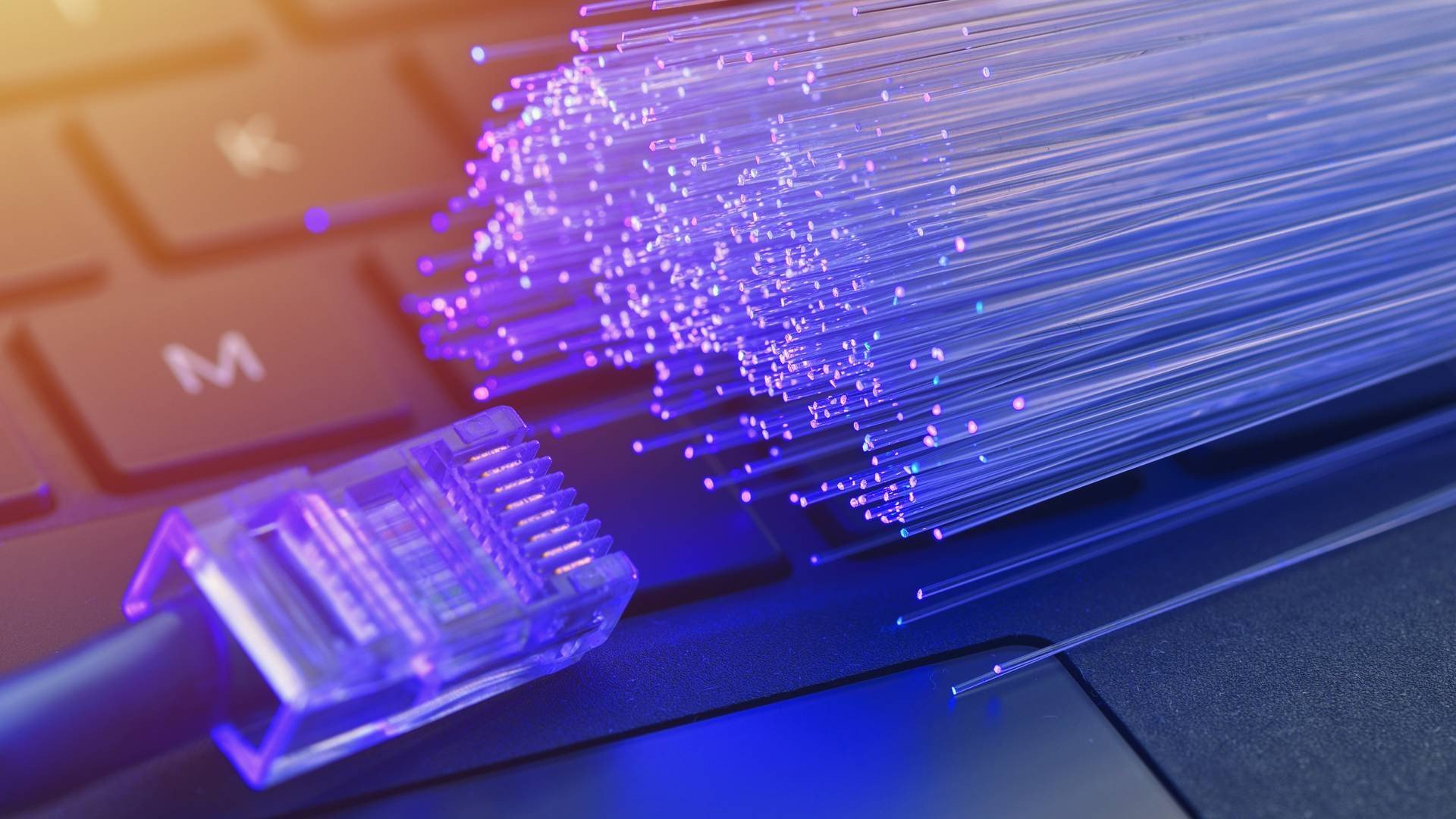The world of technology continues to push the boundaries of what’s possible, and in the realm of data transmission, a new record has been achieved. Introducing “Unveiling the Record: Fiber Transmits 20x Global Internet Traffic,” an exploration into the astounding capabilities of the latest breakthrough in fiber optics. With the ability to handle twenty times the global internet traffic per second, this achievement promises to revolutionize the way we connect and communicate. Join us as we delve into the details of this remarkable advancement, shedding light on the implications and possibilities it presents for our digital world.
Key Takeaways:
- Japanese engineers achieved a new world record by transmitting 22.9 petabits per second through a single optical fiber, which is over 20 times the global internet traffic per second.
- This speed is more than double their previous record of 10.66 petabits per second.
- The project was funded by Japan’s National Institute of Information and Communications Technology (NICT).
- The breakthrough technology has the potential to enable significantly faster internet connections.
- The optical fiber system utilizes advanced transmission technologies.
- The cost of the project has not been mentioned in the given context.
Record breaking fiber transmits 20x global internet traffic per second

The world of internet connectivity has reached new heights with a groundbreaking achievement by Japanese engineers. In a remarkable display of technological prowess, they have set a new record by transmitting a staggering 22.9 petabits per second through a single optical fiber. To put this into perspective, it is over 20 times the global internet traffic per second! This remarkable feat showcases the tremendous potential for faster internet connections and has far-reaching implications for the future of telecommunications.
Pushing the Boundaries of Possibility
The previous record, already an impressive achievement, was shattered by the engineers who managed to more than double their own previous record of 10.66 petabits per second. The project was made possible through the immense expertise and resources available at Japan’s National Institute of Information and Communications Technology (NICT), which funded this groundbreaking endeavor.
Unlocking the Secrets of Advanced Transmission Technologies
This record-breaking transmission speed would not have been possible without the cutting-edge technologies harnessed in the optical fiber system. Japanese engineers leveraged advanced transmission technologies, allowing data to be transmitted at an unprecedented rate. This revolutionary development opens up new avenues for faster and more efficient data transfer, significantly enhancing internet connectivity for users around the globe.
Implications for the World Wide Web
The impact of this breakthrough achievement on internet connectivity cannot be overstated. With this record-breaking fiber transmission, the potential for significantly faster internet connections becomes a reality. The implications are vast, ranging from smoother online streaming experiences and lightning-fast downloads to improved cloud computing capabilities and enhanced data transfer between devices. This monumental advancement sets the stage for a future where technological limitations are pushed to their boundaries, elevating the overall internet experience for users worldwide.
Unleashing the Potential of Fiber Optics
Fiber optics, the technology behind this incredible leap forward, has long been lauded for its ability to transmit data at the speed of light. By utilizing thin strands of glass or plastic fibers to carry information, fiber optics revolutionized telecommunications and data transfer. This breakthrough in fiber transmission speed harnesses the unparalleled capabilities of fiber optics, taking it to uncharted territory and paving the way for further advancements in the field.
Conclusion
The record-breaking fiber transmission by Japanese engineers, achieving a mind-blowing 22.9 petabits per second, is a testament to the relentless pursuit of innovation and the power of human ingenuity. This extraordinary achievement ushers in a new era of internet connectivity, where the boundaries of speed and efficiency are pushed to unfathomable heights. As the world becomes increasingly dependent on the internet, this groundbreaking development brings us closer to a future where seamless connectivity and lightning-fast data transmission are the norm. The record has been unveiled, and it leaves us in awe of the incredible possibilities that lie ahead.
Record breaking fiber transmits 20x global internet traffic per second. But do you know how monopolies and maps are killing internet for all? Explore the impacts of monopolies and maps on the accessibility and quality of internet in our article How Monopolies and Maps Are Killing Internet for All.
Which Technology Has The Fastest Data Transfer Rate

Key Takeaways:
– Japanese engineers have achieved a record-breaking data transfer rate of 22.9 petabits per second through a single optical fiber, surpassing the previous world record of 10.66 petabits per second.
– Fiber to the Home (FTTH) or Fiber to the Premises (FTTP) networks are currently the fastest type of fiber networks available.
– University College London (UCL) researchers have also achieved a record-breaking data transfer rate of 1.125 terabits per second.
– Scientists in Japan recently transmitted data at a speed of 319Tbps over a distance of 3001km using a four-core fiber cable.
When it comes to technology advancements and data transfer rates, the question arises: “Which technology has the fastest data transfer rate?” A recent breakthrough by Japanese engineers has shattered records and set a new benchmark in the world of fiber optic technology. Let’s delve into the astounding capabilities and implications of this groundbreaking achievement.
Record-Breaking Data Transfer Rate
In an impressive feat, Japanese engineers have pushed the boundaries of data transfer rates by achieving a record-breaking speed of 22.9 petabits per second through a single optical fiber. To put this astounding figure into perspective, it is more than 20 times the global internet traffic per second. This accomplishment surpasses the engineers’ previously held world record of 10.66 petabits per second.
The Fastest Fiber Networks Available
Fiber optics technology has revolutionized internet connectivity, and Fiber to the Home (FTTH) or Fiber to the Premises (FTTP) networks reign supreme in terms of speed. These networks utilize advanced transmission technologies to provide unparalleled data transfer rates. Compared to other internet connectivity options, fiber offers high-speed capabilities, increased bandwidth, and improved reliability.
Other Impressive Achievements
While the Japanese engineers’ accomplishment is truly remarkable, it’s important to note that other researchers have also made significant strides in the field of data transfer rates. University College London (UCL) researchers recently achieved a record-breaking data transfer rate of 1.125 terabits per second, marking the fastest ever recorded for digital information.
Moreover, scientists in Japan have recently made headlines by transmitting data at a mind-boggling speed of 319Tbps over a distance of 3001km using a four-core fiber cable. These achievements showcase the immense potential for further advancements in fiber optic technology.
The Future of Data Transfer Rates
As technology continues to evolve, we can expect even faster data transfer rates in the future. The accomplishments of Japanese engineers and researchers highlight the perpetual drive to push the boundaries of what is deemed possible. While fiber optics has already paved the way for lightning-fast internet connectivity, ongoing research and innovation promise to unlock even more astonishing capabilities.
In conclusion, the fastest technology in terms of data transfer rates is currently fiber optics, specifically the Fiber to the Home (FTTH) or Fiber to the Premises (FTTP) networks. With record-breaking achievements by Japanese engineers and researchers, the landscape of fiber optic technology is constantly evolving to provide unparalleled speed and connectivity possibilities.
Sources:
– Japanese engineers break record, 20x global internet traffic per second – MSN
– New World Record as Fibre Optic Speeds Pushed to 319Tbps – ISPreview
Most Viewed
[Link1] “Japanese engineers break record, 20x global internet traffic per second” – Interesting Engineering
[Link2] “Record-breaking fiber transmits 20x global internet traffic per second” – New Atlas
Key Takeaways:
– Japanese engineers have achieved a groundbreaking feat by transmitting a record-breaking 22.9 petabits per second through a single optical fiber, surpassing the global internet traffic by over 20 times.
– This remarkable speed outperforms other existing fiber network options, establishing a new milestone in data transmission.
– The breakthrough was made possible through the use of an advanced optical fiber system developed by the collaboration between the National Institute of Information and Communications Technology (NICT) and the Eindhoven University of Technology.
– By utilizing S-band fiber with a 4-core structure, the high transmission quality necessary for this remarkable achievement was maintained.
– Previously, NASA held the record for data transmission speed at 46 terabits per second, making this accomplishment a significant leap in capacity.
– This record-breaking fiber transmission has the potential to revolutionize internet connectivity, offering faster and more reliable internet access globally.
– Fiber optic technology continues to evolve, and further advancements are expected in the future, enabling even faster data transfer rates.
The rapid advancement of technology never ceases to amaze us. In a groundbreaking achievement, Japanese engineers have shattered records by achieving a data transmission speed that exceeds the global internet traffic by over 20 times per second. This phenomenal accomplishment opens doors to an era of internet connectivity unparalleled in speed and capacity.
To put things into perspective, the internet has become an essential part of our lives, seamlessly connecting individuals, businesses, and even nations across the globe. The exponential growth in data transfer demands the utmost speed and efficiency. And now, with this record-breaking fiber transmission, we are looking at a whole new realm of possibilities.
Unveiling the Record: Fiber Transmits 20x Global Internet Traffic
Imagine the internet as a bustling highway, with millions of cars zipping past in every direction. Now, picture a single fiber optic cable that can handle the traffic equivalent to twenty times the number of cars on that highway. It’s an astonishing feat of engineering that pushes the boundaries of what we thought was possible.
The achievement was made by utilizing a new optical fiber system developed through a collaboration between Japan’s National Institute of Information and Communications Technology (NICT) and the Eindhoven University of Technology. This cutting-edge system utilizes an S-band fiber with a 4-core structure, ensuring the high transmission quality necessary to achieve such a record-breaking speed.
Just to give you an idea of the magnitude of this achievement, the previous record for data transmission speed was held by NASA, clocking in at 46 terabits per second. Now, Japanese engineers have blown that record out of the water, achieving an astounding speed of 22.9 petabits per second. It’s a leap forward that highlights the remarkable progress we continue to make in the field of fiber optics.
The Implications of Faster Internet Connectivity
The impact of this breakthrough cannot be underestimated. With this level of data transmission speed, the possibilities are vast. We’re talking about a future where internet connections are faster, more reliable, and capable of handling the ever-increasing data demands.
Faster internet connectivity opens doors to enhanced communication, seamless streaming, and improved productivity. Video conferences become smoother and more immersive. Downloading and uploading large files become a breeze. The potential for advancements in fields such as cloud computing, virtual reality, and artificial intelligence is enormous. It’s a game-changer that will empower businesses, individuals, and industries to reach new heights of innovation and efficiency.
Looking Ahead: The Future of Fiber Optics
The achievement of 22.9 petabits per second is undoubtedly impressive, but it’s just the beginning. Fiber optic technology continues to evolve at a remarkable pace. Researchers and engineers are constantly pushing the boundaries, exploring new ways to increase data transfer speeds and improve the efficiency of fiber networks.
As we look to the future, we can expect even faster data transfer rates. Researchers at University College London (UCL) have already achieved a record-breaking data transfer rate of 1.125 terabits per second. Scientists in Japan have transmitted data at a speed of 319Tbps over a distance of 3001km using a four-core fiber cable. These breakthroughs give us a glimpse into what lies ahead.
The world is becoming more interconnected than ever before, and fiber optic technology plays a pivotal role in enabling this connectivity. The record-breaking fiber transmission achieved by Japanese engineers is a testament to human ingenuity and a harbinger of a future where internet connections are faster and more reliable than ever, catapulting us into the next era of innovation and progress.
Note: To access the full articles and learn more about this groundbreaking achievement, refer to the following sources:
[Link1] “Japanese engineers break record, 20x global internet traffic per second” – Interesting Engineering
[Link2] “Record-breaking fiber transmits 20x global internet traffic per second” – New Atlas
















